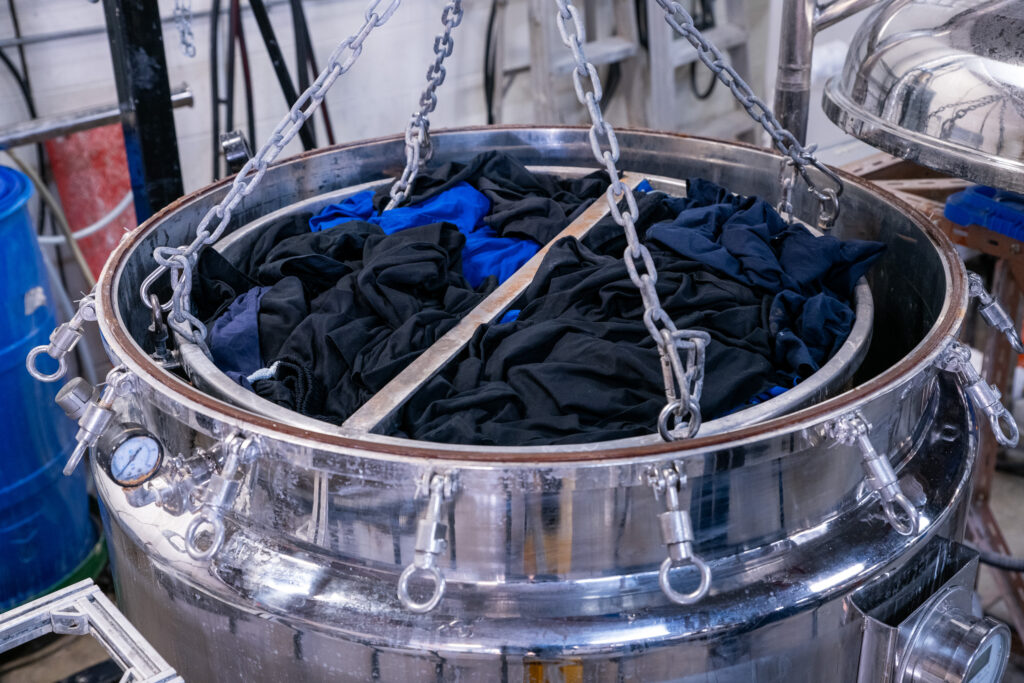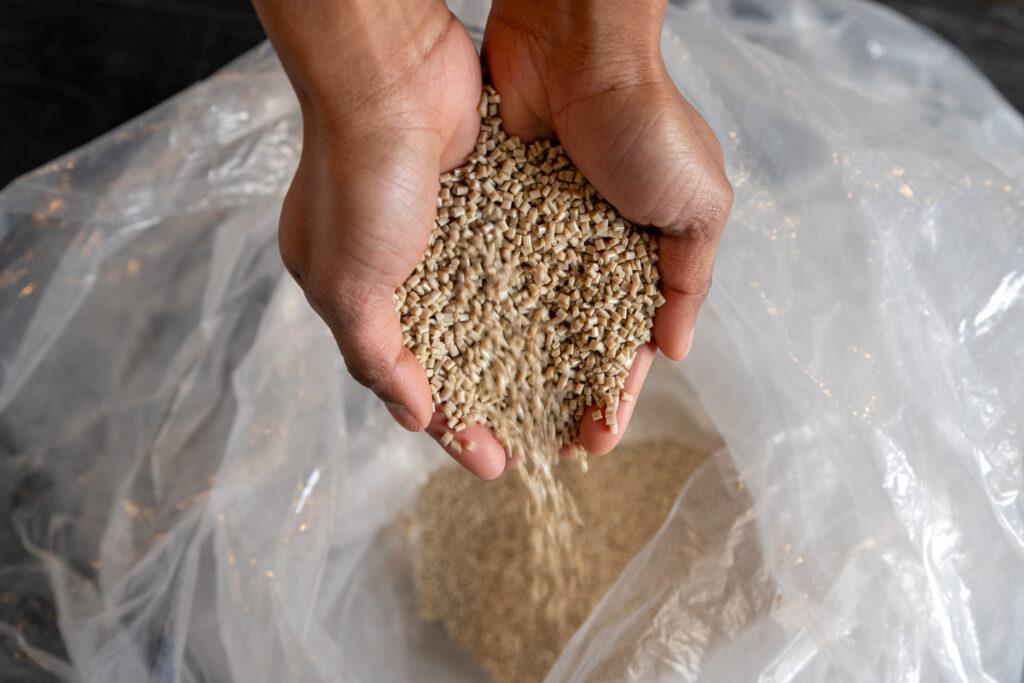Tackling Textile Waste: A Solution for A Sustainable Future
Millions of tons of textiles are discarded yearly, largely due to fast fashion. Chris Wai, Founder & CEO at Sixone Labs, discusses the problem with textile waste and factors hindering recycling efforts. Pressure mounts on the industry to adopt sustainable practices, but existing recycling methods fall short. Targeted chemical reactions is a way to extract desired components from blended textiles, offering a closed-loop circular system with reduced environmental impact.
The Textile Waste Problem
Textile waste is a growing global environmental crisis. Every year, millions of tons of textiles are discarded, with a significant portion ending up in landfills or being incinerated. According to the U.S. Environmental Protection Agency (EPA) and Environment and Climate Change Canada, Americans and Canadians collectively discard close to 20 million tons of textile waste annually. The situation is further exacerbated by the fast fashion industry which promotes rapid production and overconsumption of inexpensive, “trendy” clothing. With shorter garment lifespans and higher turnover rates, fast fashion is a major contributor to the escalating volumes of textile waste generated.

When textiles are left to decompose in the environment or landfills, they release methane into the atmosphere, breakdown into microplastics, and leach toxic chemicals. Chemical runoff and microplastics damage ecosystems and pollute rivers, oceans, and drinking water sources. These toxic chemicals are then absorbed by plants through water uptake, causing crop damage and impacting food sources. To avoid exacerbating the impacts of textile waste on planetary and human health, the industry needs to find recycling solutions for diverting textile from landfills.
Currently, less than 1% of global textile waste is recycled back into textiles. The main challenge with recycling textiles is the complex composition of modern textiles. Clothing primarily consists of polyester combined with materials such as cotton, elastane, and nylon to achieve desired form, function, and feel. In addition, these fabrics are treated with dozens of chemical additives, including various dyes and surface finishes (e.g., non-iron, water resistance) to enhance performance. The full list of chemicals and their application in the manufacturing process are kept as manufacturer trade secrets, complicating the recycling process. When the full composition of a textile is unknown, recycling processes produce impurities that require costly purification. Developing a textile recycling solution that can address this chemical complexity is crucial for achieving sustainability goals and reducing the environmental footprint of the textile industry.
“Currently, less than 1% of global textile waste is recycled back into textiles. The main challenge with recycling textiles is the complex composition of modern textiles.”
Chris Wai
An Industry Under Pressure
Growing awareness on the textile industry’s environmental footprint has led to significant consumer and regulatory pressures on the textile industry to adopt more sustainable practices. Consumers are increasingly demanding transparency and sustainability from brands, and regulatory bodies worldwide are developing policies to address the textile waste problem.
The European Union’s Circular Economy Action Plan and the US Textile Recovery Initiative are examples of policies aimed at promoting recycling and reducing textile waste. These regulations often mandate manufacturers to take responsibility for the entire lifecycle of their products, from production to disposal, thereby encouraging the development of more sustainable practices. In California, for instance, SB707 requires textile manufacturers to implement recycling programs and meet stringent sustainability targets. Similarly, the EU’s directive on waste and Canadian textile recycling policies push for greater accountability and sustainable practices in the textile industry.
Current Solutions Are Not Viable
Despite the push for sustainability, existing recycling methods do not adequately address the complexity of textile waste. The two primary methods – mechanical and chemical recycling – have significant limitations when it comes to recycling textiles.

The predominant and industrially scaled method, mechanical recycling, involves changing the shape of materials without modifying their molecular structures. For textiles, this typically refers to shredding and re-spinning fibers into new yarn, or melting and extruding plastic bottles into fibers to be used for new yarn. While this method works well for pure materials, it struggles with fabrics that are blended with two or more materials and those that have been chemically treated. The process also degrades the quality of the materials, making it a downcycled and non-circular approach.
Chemical recycling, on the other hand, modifies the molecular structures of the polymers present in textiles to recreate material that is of virgin quality. Solvents are typically used to break down the polymers into their raw components, which can then be reconstituted into new materials. This method can be used for materials where the compositions are known, but it faces challenges with blended fabrics with unknown chemical additives, which can cause unwanted side reactions. This results in lower-quality outputs or worse, creation of inhibitors that block the recycling process or products that are harmful to human and planetary health.
“Existing recycling methods do not adequately address the complexity of textile waste. The two primary methods – mechanical and chemical recycling – have significant limitations when it comes to recycling textiles.”
Chris Wai
A New Perspective: Targeted Chemical Reactions
At Sixone, we recognize that to effectively address the textile waste crisis, we need a novel approach that can overcome the limitations of current recycling methods. Our solution involves targeted chemical reactions that are designed to handle the complexities of blended textiles, thus extracting the desired components without breaking down the other chemicals and generating undesirable by-products.
Our approach has two key innovations:
- Algorithmic Predictions: Using our proprietary algorithms and materials data, we analyse and predict blended textile reactivities in real-time. This allows us to determine the optimal reaction conditions and anticipate problematic blends.
- Selective Depolymerization: Based on these predictions, we use mild chemical processes to selectively break down the synthetic fibers without damaging the other components and chemicals. This allows us to extract the desired polymers in a relatively pure form while retaining the strength and structure of other materials in the blend (e.g. cotton, elastane).

Some key benefits include:
- Versatility: Our technology can be used for a variety of textile blends, including complex multi-fiber fabrics, expanding the range of materials that can be recycled.
- Impurity Management: Our technology allows us to extract the desired polymers, while leaving other impurities such as dyes and finishing agents in their original forms. By minimizing uncontrolled side reactions of these impurities, we can simplify and reduce the costly purification steps.
- Mild Conditions: By targeting the reactions to the optimal conditions for a given material, we use milder processing conditions that reduce our energy and chemical consumption, minimize waste, and reduce the environmental impact of the recycling process.
- Closed-Loop Circular System: Our process is designed as a closed-loop system, where the textile waste can be turned into feedstock for the textile industry without any quality degradation.
The textile waste problem is a significant environmental challenge that requires innovative solutions. Current recycling methods, while a step in the right direction, are insufficient to address the complexities of modern textiles. At Sixone, we believe that our targeted chemical reaction approach offers a viable and scalable solution to this pressing issue. By focusing on selective depolymerization and effective impurity management, we can transform the way we handle textile waste, paving the way for consumers to have a more sustainable and responsible future with the textile industry.














